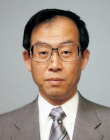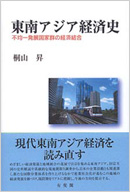Top>Opinion>Economic Development in the ASEAN Region and Japanese Companies
 Index
Index

Kiriyama Noboru [profile]
Economic Development in the ASEAN Region and Japanese Companies
Kiriyama Noboru
Professor, Faculty of Commerce, Chuo University
Areas of Specialization: Regional economics in Southeast Asia and international relations
Territorial disputes in the South China Sea and economic revitalization
Recently, there have been an increasing number of reports in the Japanese media of Japanese companies entering the ASEAN region. In these circumstances, however, there was much attention paid to political stance taken at the 22nd regular ASEAN Summit that was held at the end of April in Brunei (which has the ASEAN Chairmanship for 2013). This was because the behavior of Cambodia (which had the ASEAN Chairmanship in 2012) at the previous summit led to international concerns of a break-up of ASEAN. One of the concerns of ASEAN for the past few years has been the territorial disputes with China in the South China Sea. In Cambodia last year, the summit was run in accordance with China’s desires, and as a result the Chairman’s Statement (Joint Statement) was ignored for the first time in ASEAN’s history. Therefore, the focus was on how this situation could be rectified in the 2013 summit. The Chairman’s Statement expressed that ASEAN has agreed to work towards a legal biding Code of Conduct in the South China Seas with China, in contrast to China’s position that disputes should be handled bilaterally. This was a return to the position long held by ASEAN.
Amid the trend of aggressive Chinese maritime expansionism and the deepening of China’s conflict with Japan, there have been increased outlooks for economic revitalization based on ASEAN’s uniform position. With the passing of global economic crisis of 2008 and the increasingly growing middle-class, there are even increased expectation toward the economic revitalization of the ASEAN region composed of 10 countries and 600 million people.
The turning point for ASEAN economic revitalization
Today’s ASEAN economy is undergoing increased investments by Japanese, European, and American companies and a foreign market entry boom in Indonesia, Thailand, and synergistically, the CLMV countries (Cambodia, Laos, Myanmar, and Vietnam) as a result of drastically changing policy towards China with transition from military to civilian control in Myanmar (following strong local opposition, the Thein Sein administration decided in September 2011 to stop construction of the massive Myitsone dam project that to wholly power China), the settlement with Aung San Suu Kyi, and the lifting of the economic sanctions by countries in Europe and North America. In particular, Japanese companies are displaying what could be described as excessive expectations and desires toward market entry.
Japanese companies and development policy implementation
However, there is a sense of deja-vu in connection to this ASEAN market entry boom among Japanese companies. The economic development of the ASEAN countries into industrialized societies started off with the establishment of the organization in 1967 and the foreign capital-based industrialization policies that were adopted at that same time. Looking back, the return of Japanese companies to Southeast Asia following WW2 was a little before that. For example, Toyota entered Thailand in 1962 and Matsushita Electric Industry (Panasonic) entered Malaysia in 1966, after which both companies began to establish manufacturing bases. For about a half century since then, major Japanese companies have become deeply rooted in local societies without withdrawing.
The number of advancing companies has constantly fluctuated up until now while being affected by factors such as the expansion of the Japanese economy and the increase of trade friction with the US and Europe. During this period, Japanese companies selected among South Korea, Taiwan, Hong Kong, and the ASEAN countries when deciding where to expand. China did not emerge as a choice until after the Reform and Opening Up policy.
Then countries in the ASEAN region implemented a series of policies to attract foreign companies based on a basic policy of promoting the progress of industrialization. During the 1970s, as in the cases of South Korea and Taiwan, they established export processing zones that are a developed form of trade zones. These soon transformed into general industrial parks. This was brought about by the creation and expansion of Japan’s electronic equipment industry and the progress of industry accumulation through the expansion of foreign capital participation.
During this process, there was a period during which increased opposition towards Japanese companies was experienced in the ASEAN countries. Landmark events included the anti-Japanese protests and riots participated in by students in Thailand and Indonesia in 1974 upon Prime Minister Kakuei Tanaka’s visit to Southeast Asia. The market entry of Japanese countries and the expansion of ODA grants overlapped with opposition to local authoritarian regimes.
Two viewpoints: the current economic situation
Looking at the subsequent events, from the perspective of Japanese companies wanting to advance overseas the largest market entry boom occurred when the yen underwent a sharp rise following the Plaza Accord in 1985. Market entry was focused on Thailand, Malaysia, and Indonesia (particularly Thailand), and this trend was referred to as a dash. On the ASEAN side, this was accompanied by demands for reductions on tariffs within the region. The industrial policies of countries that were promoting industrialization focused on the automotive industry were forcing overlapping investment by advancing companies, despite the confined scale of their domestic markets. This eventually led to the formation of the AFTA (ASEAN Free Trade Area) by ASEAN and the establishment of supply chains for the inner-region parts industry by companies.
However, market entry and the investment appetite of advancing companies began to fade as a result of the Asia currency crisis in 1997, China’s accession to the WTO, and increased concerns of country risk relating to China as a host country following the SARS problem in 2003, which included the hiding of information by Chinese authorities. Changes in ASEAN investments due to external factors were repeated over and over within a relatively short time. Every time these types of problems occurred, it can be safely said that Japanese companies have increased investments and made new advance in the ASEAN region.
Meanwhile, from the perspective of the ASEAN countries, it can also be said that their economic development has been in close connection with trends among Japanese companies and the development of the Japanese economy. Within this process and throughout several generations, in addition to the acquisition of management knowhow, there have been a break away from agricultural labor practices, improved proficiency in factory labor, and the accumulation of a labor force that is capable of accepting and supporting the workplace discipline required for modern industry.
In fact, in parallel to the ASEAN meeting of foreign ministers at the end of April the 9th BIMP-EAGA Summit was held (Brunei Darussalam, Indonesia, Malaysia, and Philippines East Asean Growth Area Summit). In the Joint Statement that consists of 14 items, it is mutually confirmed that the economic development has got on track in the border or frontier regions of participant countries. ASEAN’s economic development has now reached the stage in which this type of broad development planning that goes beyond international borders is underway within the ASEAN region.
- Kiriyama Noboru
Professor, Faculty of Commerce, Chuo University
Areas of Specialization: Regional economics in Southeast Asia and international relations -
Professor Kiriyama was born in 1943 in Tokyo and graduated from the Faculty of Letters, Tokyo University of Education in 1971. He completed the required coursework for the doctoral program at Division of Social Sciences, Hosei University Graduate School in 1981, and served as a visiting investigator for the Research and Legislative Reference Bureau of the National Diet Library and as Assistant Professor on the Faculty of Commerce, Chuo University before starting their current position in 1991. He is currently conducting research on economic and political trends in the ASEAN region.

Major works include A History of Southeast Asia: A History of Exchange Among People, Things, and Cultures [Tonan Asia no Rekishi: Hito, Mono, Bunka no Koryushi] (co-authored with Hirohide Kurihara and Takashi Nemoto, Yuhikaku, 2003); An Economic History of Southeast Asia: Economic Binds Among Nations With Uneven Levels of Development [Tonan Asia Keizaishi: Fukinnitsu Hattenkokkagun no Keizai Ketsugo] (Yuhikaku, 2008)
- Research Activities as a Member of Research Fellowship for Young Scientists (DC1), Japan Society for the Promotion of Science (JSPS) Shuma Tsurumi
- Important Factors for Innovation in Payment Services Nobuhiko Sugiura
- Beyond the Concepts of Fellow Citizens and Foreigners— To Achieve SDGs Goal 10 “Reduce Inequality Within and Among Countries” Rika Lee
- Diary of Struggles in Cambodia Fumie Fukuoka
- How Can We Measure Learning Ability?
—Analysis of a Competency Self-Assessment Questionnaire— Yu Saito / Yoko Neha - The Making of the Movie Kirakira Megane








